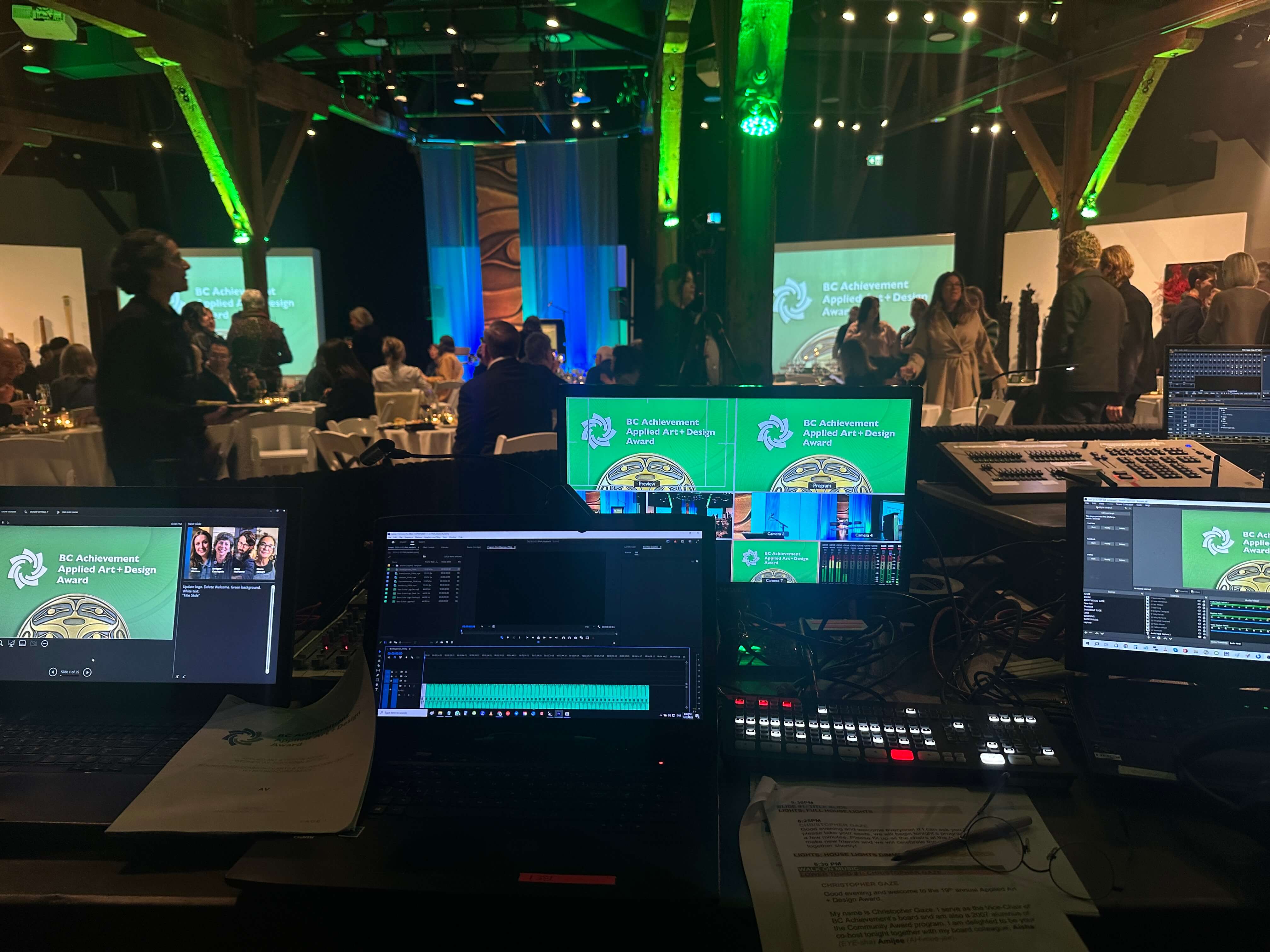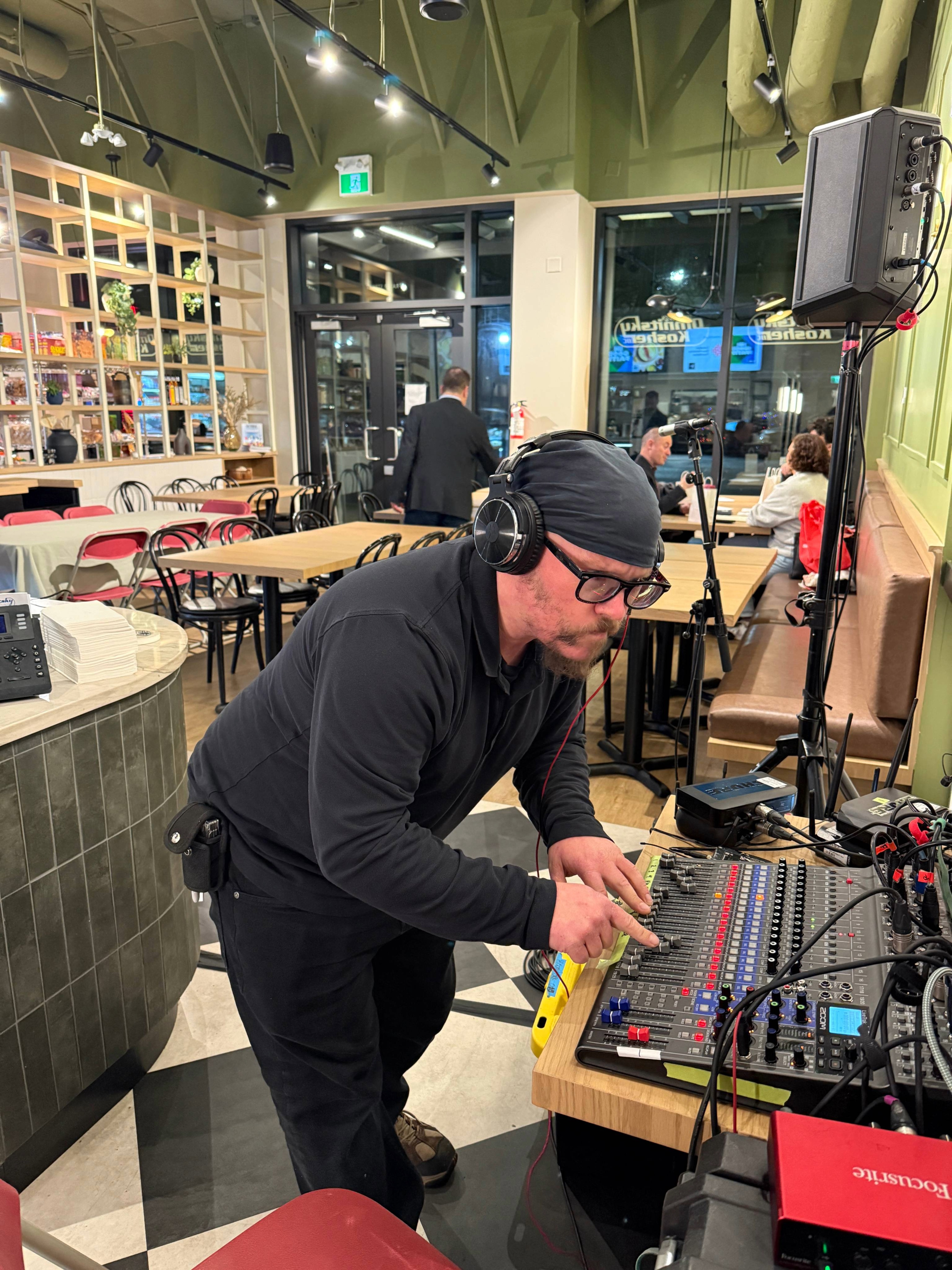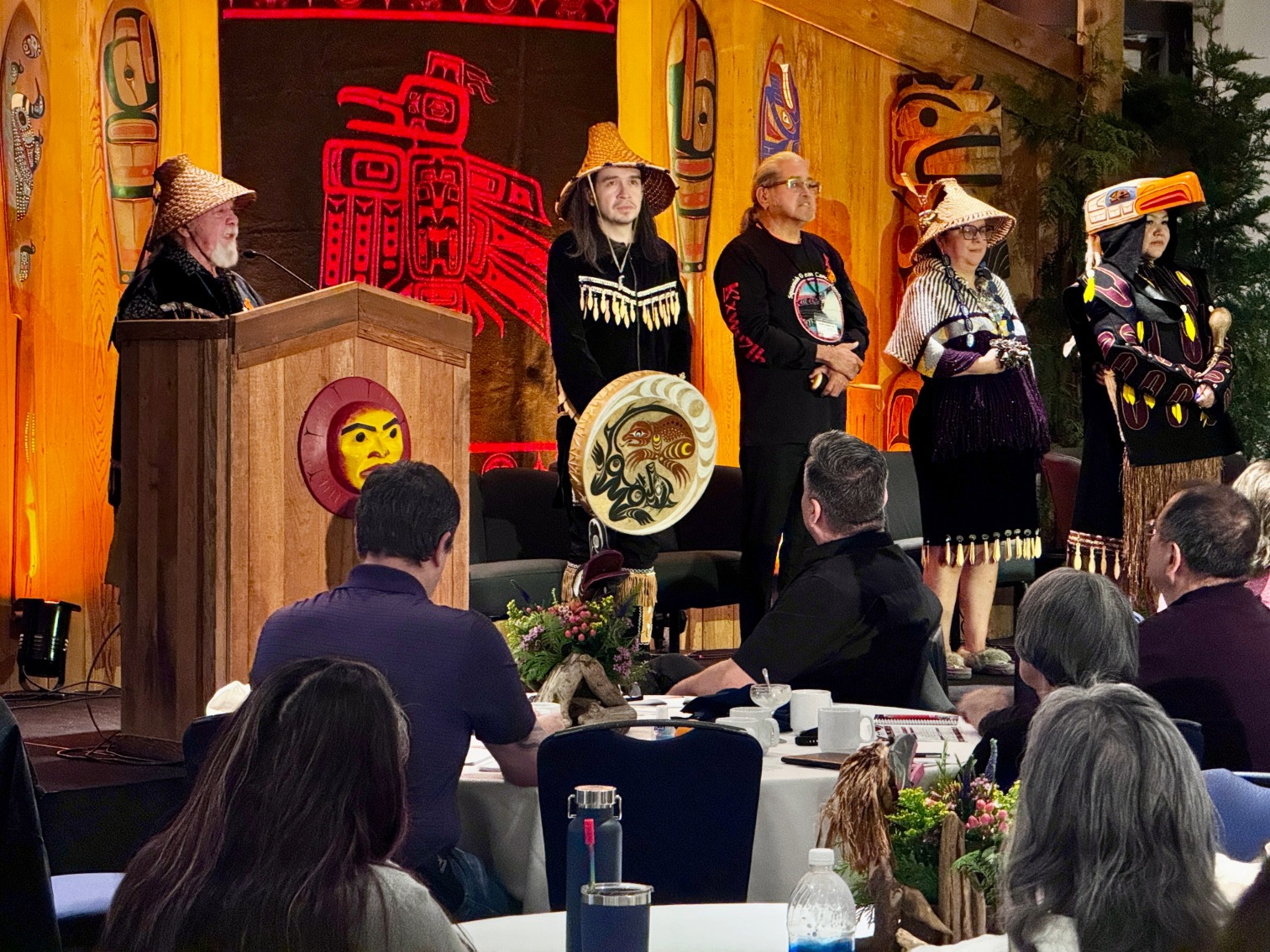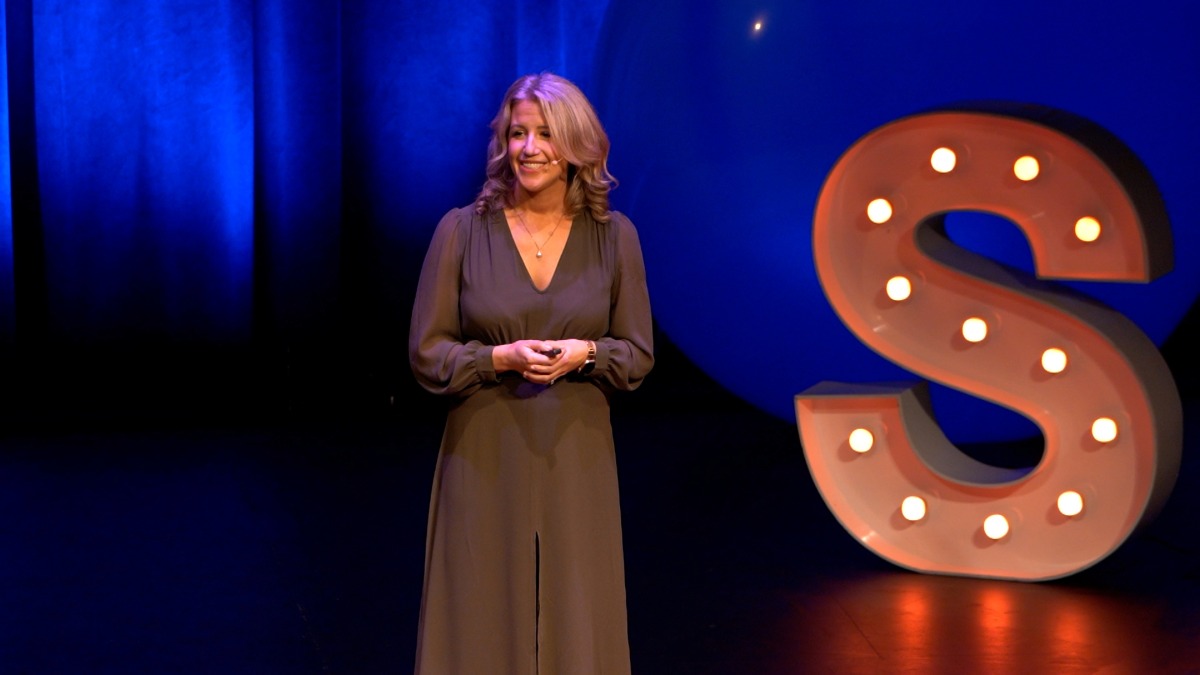Blog: How to do live streaming for an event
Live streaming is no longer a “nice-to-have” — it’s a strategic necessity. Whether you're hosting a corporate conference, a nonprofit fundraiser, or a government announcement, live streaming allows you to reach a wider audience, increase engagement, and create a lasting digital presence.
In this complete guide, you’ll learn:
• How to plan and execute a successful live stream
• What equipment and platforms to use.
• Best practices for audience engagement and accessibility
• Tips to avoid common mistakes
• What types of events benefit from live streaming
• How to use post-event content for marketing
Let’s dive in!

1. Define Your Objectives and Audience
Before thinking about platforms or gear, get clear on your goals. Ask yourself:
• What’s the main goal? Awareness, education, internal communication, fundraising, etc.
• Who is your audience? Local community? Global viewers? Clients?
• What action do you want them to take? Register, donate, subscribe, follow-up?
🎯 Example: If you're hosting a product launch, your objective might be to generate buzz, increase sign-ups, and get media attention. That will affect everything from platform choice to camera angles.
2. Choose the Right Streaming Platform
There’s no one-size-fits-all platform. Here’s a quick breakdown of the most popular ones:
• Zoom is ideal for private events and webinars. It’s easy to use, offers breakout rooms for group discussions, and doesn’t pose copyright risks with background music or visuals. This makes it a safe choice for internal meetings, training sessions, or formal online events.
• YouTube Live works best for public events and reaching new audiences. It offers powerful SEO benefits, a huge potential reach, and a reliable platform that supports high-quality streaming. If visibility is your goal, this is a strong option.
• Facebook Live is great for community events and casual engagement. It encourages real-time social interaction through comments, shares, and reactions. Use it if your event involves community building or if your audience is already active on Facebook.
• LinkedIn Live is best for professional or B2B audiences. It's tailored for corporate, educational, or career-related content and offers a unique opportunity to position your brand in front of a business-minded crowd.
• Twitch is popular for gaming, creative, or informal content. It allows for real-time interaction and can build a loyal follower base, especially if your content is fun, interactive, or visually engaging.
If you want to maximize your reach, consider multi-streaming to several platforms at once. Tools like Restream, StreamYard, or OBS with plugins let you broadcast your event across multiple platforms simultaneously. This approach helps you stay centralized while expanding your audience.
3. Select the Right Equipment
Investing in reliable equipment helps maintain a professional look and sound. Here’s what you’ll need:
1) Video Equipment
• DSLR or mirrorless camera for HD quality
• Tripods or gimbals for stable shots
• Webcams (as a budget-friendly backup)
2) Audio Equipment
• Lavalier mics for presenters
• Shotgun mic for fixed camera
• Audio interface (Focusrite, Zoom H4n) for multi-mic setups
3) Lighting
• Softbox lights
• Ring lights for interviews
• LED panels with adjustable temperature for different tones
4) Internet & Network
• Wired Ethernet > Wi-Fi
• At least 10 Mbps upload speed
• Test using speedtest.net before your event
5) Software
• OBS Studio (free, powerful)
• Streamlabs (user-friendly interface)
• vMix (advanced, great for switching sources)
• Wirecast (pro features with support)
Pro Tip: Set up a backup recording on a local computer or SD card in case of streaming failure.
4. Plan Your Content and Run of Show
Every good live stream needs structure. You can’t just hit “Go Live” and wing it.
Create a Run of Show (ROS), which is a minute-by-minute outline of:
• Introductions and welcome
• Speaker segments
• Media playback (video intros, slides)
• Q&A sessions
• Breaks
• Closing remarks
Include time cues, speaker notes, and technical cues for camera switches or overlays.
Bonus Tip: Use countdown timers, overlays, and lower-thirds to guide viewers throughout the stream.
5. Design Your Streaming Environment
Create a space that looks and feels professional.
• Environment Checklist:
• Quiet room, free of distractions
• Neutral or branded background
• Proper lighting to eliminate shadows
• Camera at eye-level, framing subjects with headroom
• Avoid echo or ambient noise
🔇 Use foam panels or a lav mic to reduce sound bounce if you're in an open space.
6. Make It Accessible for All
Inclusivity matters. Accessibility features help everyone engage fully, and many are easy to implement.
Add These Accessibility Features:
• Live captions using AI tools or professional captioners
• Sign language interpreters on-screen or in a PIP window
• Real-time slide sharing during presentations
• Descriptive audio for visually impaired audiences
Use platforms like StreamText or Otter.ai for captions, or hire professional accessibility teams for large-scale events.
7. Promote Your Live Stream
Don’t assume people will find your event on their own. Promote it weeks in advance across multiple channels.
Promotion Checklist:
• Event page or landing page with registration
• Social media countdowns and reminders
• Email marketing with calendar invites
• Behind-the-scenes teaser posts
• Paid ads targeting relevant audiences
📆 Pro Tip: Remind users 24 hours, 1 hour, and 10 minutes before the event via email or SMS.
8. Go Live: How to Run a Smooth Livestream
Start your stream 5–10 minutes early with a “starting soon” screen or countdown. Greet your viewers, introduce the event, and stick to your plan — but stay flexible.
During the stream:
• Monitor chat or Q&A
• Have a tech support person ready
• Engage with audience questions
• Show lower-thirds with speaker names and topics
• Use branded overlays to look polished
9. Post-Event Follow-Up and Content Repurposing
After your stream:
• Share a recording on social media or your blog
• Email a thank-you and replay link
• Create short clips from the livestream for LinkedIn or Instagram
• Analyze metrics: viewer retention, most watched se gments, comments
Repurpose content into:
• Blog posts
• Infographics
• Testimonials
• Case studies
10. Avoid These Common Livestream Mistakes
Here’s what to watch out for:
• Starting late or awkwardly — always rehearse
• Bad lighting or echoey audio
• Ignoring remote viewers — interact with them often
• Overcrowded screen — avoid too many overlays
• Unstable internet — test beforehand and have a backup hotspot
11. What Kinds of Events Can Be Livestreamed?
• Live streaming for Corporate Events in Vancouver
Product launches, internal meetings, and investor updates
• Live streaming for Conferences & Webinars in Vancouver
Expand your audience beyond the venue
• Live streaming for Nonprofits & Fundraisers in Vancouver
Engage donors and showcase your mission
• Live streaming for Professionals in Vancouver
Host legal, medical, or educational seminars
• Live streaming for Government & Civic Meetings in Vancouver
Improve transparency and community engagement
• Live streaming for Concerts & Performances in Vancouver
Let fans experience your music in real time
12. Trends in Live Streaming to Watch
Stay ahead by incorporating new strategies:
• Hybrid events combining physical + virtual audiences
• 360° and drone streams for immersive experiences
• Interactive overlays (polls, donations, Q&A)
• AI-driven transcription and translations
• Multi-camera switching for cinematic results
Internal Links:
- https://www.streamcity.ca/blog/the-power-of-live-streaming-engaging-your-audience-in-real-time/
FAQs
Q: Do you provide full-service livestreaming for corporate or public events?
Yes, we handle everything from camera setup and audio to live switching and streaming across multiple platforms. We customize the setup based on the type of event and your audience.
Q: Can you manage both in-person AV and livestream production at the same time?
Absolutely. Our team is experienced in delivering hybrid events — managing sound systems, projectors, and lighting for the venue, while simultaneously producing a high-quality livestream for remote attendees.
Q: How do I record my stream?
Most software like OBS and vMix allow local recording while you stream. If we’re handling your event, we always record a backup for repurposing and future use.
Q: How far in advance should I plan my livestream?
Ideally, give yourself 2–3 weeks to plan and promote effectively — but for larger conferences or hybrid events, even more lead time helps us deliver the best results.
Conclusion
Live streaming an event opens up a world of possibilities. It helps you connect with a larger audience, deliver a more professional experience, and repurpose your content long after the event ends.
By following the steps in this guide — from goal setting to post-event engagement — you'll be on your way to creating a livestream that’s polished, inclusive, and impactful.
Ready to Livestream Your Next Event in Vancouver?
Whether you're planning a corporate conference, nonprofit event, or government announcement, StreamCity.ca provides professional livestreaming solutions that ensure your message reaches both in-person and remote audiences — seamlessly and in high quality.
Based in Vancouver, we specialize in full-service audiovisual production for events, tailored to your goals.
Tags
Recent Posts




